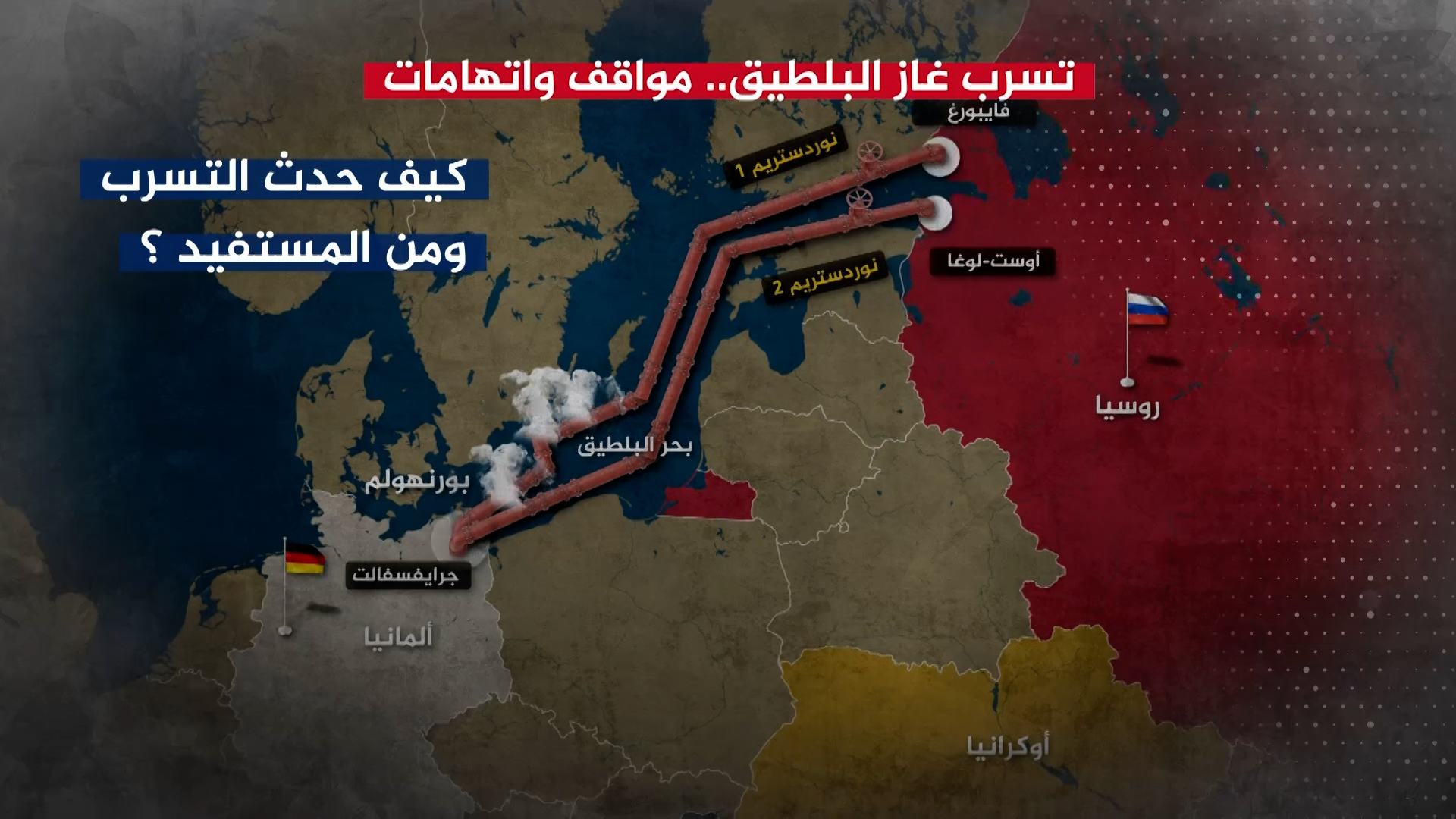The waters of the Baltic Sea experienced a gas leak in 4 different locations of the Nord Stream pipeline, according to what the Swedish and Danish governments announced.
So what exactly happened?
And what are the implications of that?
The Nord Stream pipeline or "Northern Stream" is a double pipeline with a length of more than 1,200 km, which transports gas directly from Russia to Germany via the Baltic Sea, and is the longest undersea pipeline.
Supplies through Nord Stream 1 have been suspended since the end of last August for maintenance, but the pipeline has not resumed work.
On September 26, an unexpected and rapid decrease in pressure was detected in the Nord Stream 2 line in the Danish Special Economic Zone southeast of Bornholm, located between the southern coast of Sweden and Poland.
Hours later the next day, two more leaks were detected in the north-east of Bornholm Island in the non-working Nord Stream 1 pipeline but contained gas, one in Swedish waters and the other in Danish waters.
The Swedish Seismological Institute said it recorded two underwater explosions before gas leaked in the Nord Stream pipeline, and the Danish army announced that the three leaks appeared on the surface with bubbles ranging in diameter between 200 meters and one kilometer off the Danish island of Bornholm.
climate disaster
The two countries issued strict instructions banning navigation in an area of 9 km in diameter, as well as a ban on flying in an area 1 km in diameter from the place of the leak.
Denmark has put its energy infrastructure on orange alert, the second-highest level of vigilance, and has taken measures to increase the safety of factories and facilities.
For his part, Stefano Grassi, head of the European Commission's Energy Office, said they had fears of a "climate and environmental catastrophe".
As David McCabe, a scientist at the Clean Air Task Force, which is concerned with the cleanliness of the Earth's atmosphere, explained that the concerns are great because gas pipelines contain natural gas consisting mainly of methane, which is one of the very strong greenhouse gases, and its effect on warming. Much higher than carbon dioxide.
The director of the Danish Energy Agency said that "gas leakage in pipelines is a very rare incident," and the Danish Prime Minister ruled out that the leak was accidental.
Reuters quoted a European security source as saying that there are indications that the accident was intentional.
While the Kremlin did not rule out any hypothesis, including sabotage, and demanded an immediate investigation, the Polish Foreign Ministry suggested that the gas leak was a provocative act on the part of Moscow.
The Kremlin said that it is difficult to imagine targeting the "Nord Stream" line without the involvement of a state, describing the incident as very serious and that it needs investigation.
The Kremlin added, in response to a report on the presence of Russian ships near the Nord Stream leak areas, that there was a greater NATO presence near the line.
In response to Russia's allusion to the United States being behind the sabotage, the State Department said that the claim that Washington was behind the Nord Stream incident is unreasonable and part of Russian disinformation.
Reuters quoted a US official as saying that the United States had nothing to do with the Nord Stream pipeline leak.

